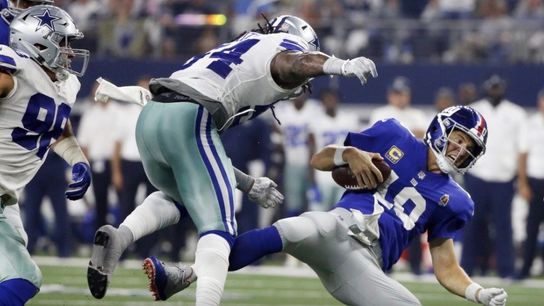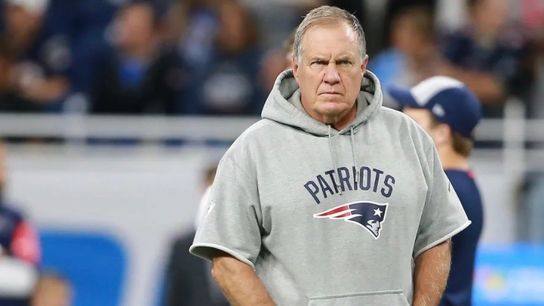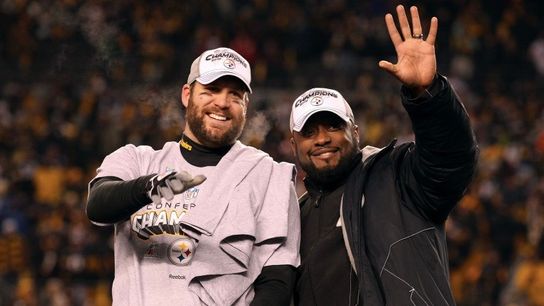A young Bill Belichick received death threats over it. Super Bowl-winning general manager Jerry Reese was fired in part because of it. Future Hall-of-Fame coach Jimmy Johnson didn’t want to be vilified for having a role in it.
What’s the “it” that created so much trouble for three of the NFL’s most successful decision-makers of the past 30 years? The handling of a franchise quarterback in decline.
Few issues in pro football cause more tension, generate more headlines and prove more divisive than organizations dealing with an aging passer whose effectiveness is suddenly called into question. That’s where Steelers’ general manager Kevin Colbert and coach Mike Tomlin find themselves this week with Ben Roethlisberger ahead of Sunday’s pivotal home game against the Broncos.
The 39-year-old Roethlisberger is among the most valuable players in Steelers’ history. He’s a two-time Super Bowl champion and a stone-cold lock for Hall-of-Fame induction. His legacy is secure, but his hold on the starter’s job is as tenuous as at any point during his decorated 18-year career.
The Steelers are 1-3 and losers of seven of Roethlisberger’s last nine starts, including the 48-37 playoff setback to the Browns in which he threw four interceptions.
Pittsburgh’s inexperienced and ineffective offensive line has contributed heavily to Roethlisberger’s struggles. But his lack of mobility and deep-ball accuracy, coupled with years of absorbing big hits, have left him vulnerable to the point where this week Tomlin was asked whether Roethlisberger represents the club’s best option at quarterback.
“Absolutely,” Tomlin said. “What he does and what he's done makes me really comfortable in saying that.”
The Steelers desperately need wins over the Broncos and Seahawks in the next two weeks to get them back to .500 and to curb criticism from the fan base and a national media that's curious to see if Mason Rudolph or Dwayne Haskins can be part of the franchise’s future.
Regardless, Roethlisberger and the Steelers are in an unenviable position they didn’t envision in the offseason when the quarterback took a pay cut to return for another year and potentially one last playoff run. Like Eli Manning and the Giants, Dan Marino and the Dolphins and, to a lesser extent, Bernie Kosar and the Browns, Roethlisberger and the Steelers are dealing with cruel questions about age and diminishing abilities.
All quarterback controversies tax the resolve of players and organizations, but none are as fraught with peril as ones involving older signal-callers who have been the faces of their franchises. And unlike Brett Favre and Joe Montana, there’s unlikely to be a second act in another city for Roethlisberger.
Such scenarios rarely have happy endings, although Peyton Manning’s final year in Denver, filled with injuries and turnovers, saw him ride off into retirement clutching a Lombardi Trophy.
The remainder of this season figures to test the Steelers’ cohesion, leadership, planning and messaging. If the offensive line cannot jell and Roethlisberger cannot raise his level of play, the franchise will face a difficult decision despite Tomlin’s assurances on Tuesday.
“It’s a very stressful time for an organization,” said Mark Dominik, the former Buccaneers’ general manager. “You have to be honest with yourself and take all the emotion and nostalgia out of your decision making. You have to do what’s best for the team.”
Added former Bills’ general manager Doug Whaley: “It’s the circle of life and it’s very tough to deal with. Father Time has conquered all except Tom Brady.”
____________________

GETTY
Giants' quarterback Eli Manning getting sacked by the Cowboys' Jaylon Smith in 2018.
Andrew Brandt’s football background is as diverse as anyone over the past quarter century. He’s worked as a player agent. He ran an NFL Europe team in Spain. He served as a Packers’ vice president specializing in contract negotiations and the salary cap. He’s been a lecturer, an ESPN analyst, a writer for various national publications and a sports law professor.
What you won’t find on Brandt’s resume is his time in the circus — the one involving Favre’s final years in Green Bay when he hinted at retirement only to return and keep Aaron Rodgers tethered to the bench.
Favre’s drama-filled last few years with the Packers and Roethlisberger’s current situation with the Steelers might not sound alike. But there’s one important lesson Pittsburgh decision-makers can glean from the experience. There needs to be a united front when dealing with high-stakes calls on the future of the quarterback position.
All three former NFL team executives interviewed for this story are in agreement on the subject.
“This is a top-down decision at the highest levels of the organization, a decision to move on from the face of the franchise for almost two decades,” Brandt wrote in an email. “Ultimate authority rests with ownership, but ideally there is consensus and buy-in from management and coaches.”
If the Steelers cannot rescue their season in the coming weeks, they might bench Roethlisberger if for no other reason to see what they have in Haskins or to give Rudolph one more shot at guiding the offense.
Whaley said it’s imperative that Tomlin, Colbert and Art Rooney II are all on board with the call. The Rooneys are among the most revered family owners in pro sports, and any decision to idle Roethlisberger would be the biggest move in Art Rooney II’s time with the club.
“We used to always say, ‘Internal debate, but external unity,’” said Whaley, who also spent 10 years in the Steelers’ pro personnel department before joining the Bills in 2010. “With Art, this is his first major time to put a stamp on the organization. . . . He should steward how this thing goes along with the GM and head coach and decide how they are going to present it to the public. Whatever the decision, it has to be done respectfully.”
What the Steelers don’t want is a repeat of the Eli Manning fiasco, where Giants’ co-owner John Mara initially went along with plans to sit the two-time-winning Super Bowl quarterback before waffling after public blowback. Reese, the general manager, and Ben McAdoo, the coach, ended up being fired less than a year after the Giants reached the playoffs in 2016.
The franchise passed on the opportunity to draft Sam Darnold and Josh Allen in 2018, taking Saquon Barkley with the No. 2 overall pick and keeping Manning as its starter.
“You learn early on in working for a team that all of that outside noise is meaningless for what you have to do,” Brandt wrote. “It is nice to have investment and passion from fans and media, but if I reacted and thought like them, I would have had heart issues. They live on a rollercoaster of different paths and emotions; teams have to stay the course on whatever they believe.
“(In Green Bay,) Brett obviously knew his time was limited with a first-round pick in the bullpen, as Aaron does now.”
____________________

GETTY
New England Patriots coach Bill Belichick.
In helping lead the Patriots to six Super Bowl titles, Belichick gained a reputation for knowing when to cut ties with aging and pricey players at the right time. His knack for doing it a year too early rather than a year too late allowed the franchise to remain cap-compliant and always in contention.
Belichick actually started the trend in the 1990s with the Browns. His most famous release was that of Kosar during the 1993 season.
The Northeast Ohio native never guided the Browns to a Super Bowl, but he steered them to three AFC title games in the late 1980s. Kosar was enormously popular in Cleveland and his benching and subsequent release enraged the fan base.
Citing the quarterback’s “diminishing skills,” Belichick sold the idea to owner Art Modell, who gave his blessing to turn the offense over to Vinny Testaverde. Belichick endured threats on his life, and longtime Browns beat writer Tony Grossi said some fans never forgave the coach even as Cleveland reached the playoffs the following year.
Such are the roiling emotions involved with the benching of a franchise quarterback.
“Belichick not only surviving the move, but thriving after that really set up his career in New England,” said Grossi, an analyst for ESPN-Cleveland. “He had evidence that, ‘I’m doing things right. No sentiment involved. I am doing it for the betterment of the football team.’ That was a real milestone in his career.”
Johnson, who already had won two Super Bowls in Dallas, was unwilling to make a similar move with Marino in 1999. Former Dolphins beat writer Armando Salguero said Johnson thought backup Damon Huard might have given Miami a better chance to win, but couldn’t bench a future Hall-of-Fame quarterback despite Marino’s lack of mobility.
“Jimmy knew there was only going to be one villain in that scenario and it wasn’t going to be Dan Marino,” said Salguero, a senior NFL writer for OutKick.
In weighing decisions whether to sit a franchise quarterback, the impact on the locker room must be factored. One source said many Giants knew Eli Manning was playing beyond his expiration date, but none were willing to go public until Odell Beckham Jr., raised the issue in a 2018 interview with ESPN.
The same source said the Steelers should keep close watch on how their receivers react when Roethlisberger throws errant passes. Dominik said it’s the responsibility of position coaches to monitor any such outward displays of frustration.
One former NFL head coach told DK Pittsburgh Sports that few issues drive a wedge into a locker room quicker than a popular veteran quarterback who begins to decline.
“If you have a divided locker room, you have no chance,” the coach said.
The former head coach, who’s still working in the league, also said he can’t imagine Tomlin benching Roethlisberger unless it’s due to injury or the Steelers falling completely out of the postseason picture.
“What’s the alternative there? That’s what you have to explain to your owner,” the former head coach said. “Neither one of those other guys is the future of that franchise. For everything Ben has done for the Steelers, he deserves the chance to turn it around. You don’t want to treat him like some slapdick because that could cause real problems. That’s not going to happen. That’s not Mike Tomlin’s style.”
____________________

GETTY
Ben Roethlisberger and Mike Tomlin.
Tomlin spent most of Tuesday’s news conference fielding questions about Roethlisberger’s status as the starter. He believes most of the technical issues related to the quarterback’s performance are correctable save for his inability to elude pressure.
“Ben used to be able to run really well when he was young,” Tomlin said smiling. “Those days are behind him.”
If the Steelers’ line could improve its run blocking and open holes for promising rookie Najee Harris, the offense would be far less one dimensional. Roethlisberger has overcome the lack of a rushing attack in the past — lest we forget the Steelers started last season 11-0 with the league’s worst run game — but two years removed from elbow surgery, the quarterback clearly needs help.
While he’s played through other downturns in form, Roethlisberger’s relevance to the team never has been challenged to this degree. His dip in production is an almost daily topic of conversation on ESPN and NFL Network.
“Ben and I have been at our jobs long enough that we know and understand what comes with it,” Tomlin said. “We love Pittsburgh, Pa. We love Steelers Nation and appreciate the passion that they have and we understand the responsibilities that come along with our roles. Him being a quarterback and me being the head coach, oftentimes, we get too much credit when things are going well and we’re always ready to absorb the negativity about our positions when things aren’t going well. That’s just life for us.”
Whaley and Dominik said the presence of Tomlin and Colbert should help Roethlisberger prepare for whatever transpires the rest of the season. This isn’t a new regime passing judgement. Colbert drafted the quarterback and Tomlin has coached him for 15 seasons. There’s a reservoir of trust built up among the three men. While it might not spare Roethlisberger from being benched if struggles persist, at least he knows he can talk through the difficult times with the coach and general manager.
The former NFL coach said that’s crucial. He cited the Packers’ decision not to give Rodgers a last-minute heads-up on their intention to draft Jordan Love as an example of how trust can quickly erode between management and a player.
“When communication lacks, negativity fills the void,” the former coach said. “I don’t think you will see that kind of lack of respect shown to Ben. If this is his last year, I think it will play out similar to what happened in New Orleans with Drew Brees. There might not be a playoff run, but it will be handled the right way.”
There is a devastating scene in the Netflix series “The Crown” in which John Lithgow, playing the part of Winston Churchill, berates artist Graham Sutherland for his 1954 portrait of the English prime minister. Instead of painting Churchill as the noble leader of Great Britain during the time of World War II, Sutherland depicts him as is -- a stooped lion in winter at age 80. Churchill feels betrayed and calls the likeness “cruel.”
“Age is cruel,” Sutherland fires back. “If you see decay, it’s because there’s decay. If you see frailty, it’s because there’s frailty. I cannot be blamed for what is.”
It’s also the reality for many great quarterbacks at the end of their careers. It’s a helmetless Y.A. Tittle kneeling on the turf at old Pitt Stadium bloodied and beaten.
You make the best of the time remaining. That’s what Ben Roethlisberger hopes to do with the Steelers before answering his call to Canton.

